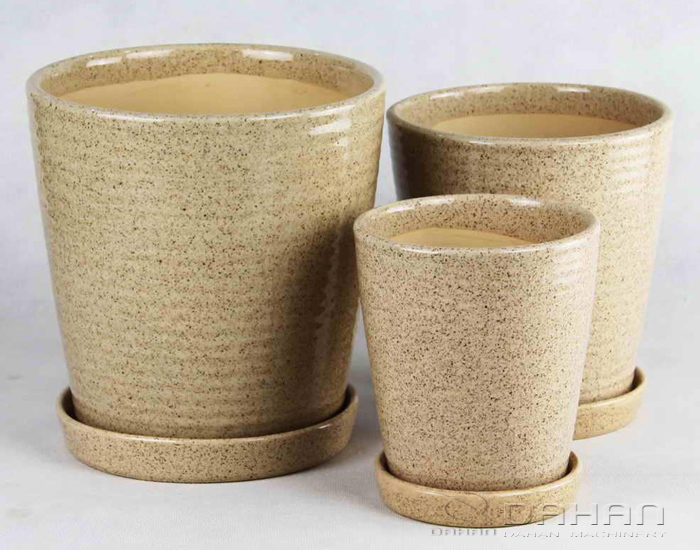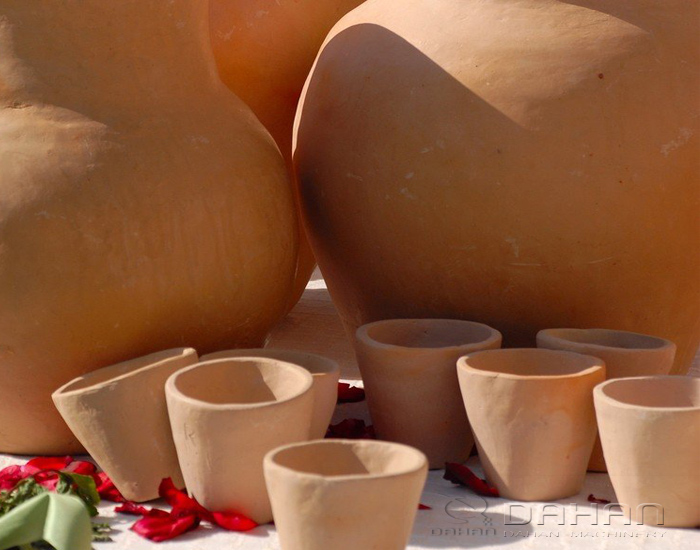The application of ceramic sieving mahcine in the ceramic industry is basically very common. Different customers have different requirements for screening particle size and processing volume, because there are subtle differences in the raw materials of various manufacturers, which leads to raw materials. The shape, particle size composition, specific gravity and temperature, mesh and requirements, and the difference in production, so that manufacturers have a demand for each model. Dahan can design the corresponding products according to the ceramic shape and type below.
Type of ceramsite
According to the raw materials of ceramsite
1: Fly ash ceramsite
Solid waste as the main raw material, adding a certain amount of cement and water, processed into balls, sintered and inflated or naturally cured, light and coarse aggregates with a particle size of 5mm or more, referred to as fly ash ceramsite.
2: Clay ceramsite
Clay, sub-clay, etc. as the main raw material, processed and granulated, swelled, light and coarse aggregates with a particle size of 5mm or more, called clay ceramsite.
3: shale ceramsite
Also known as expanded shale. The shale ceramsite is a shale granitic aggregate with a particle size of 5 mm or more, which is crushed, sieved, or pulverized into a ball. The shale ceramsite is divided into: ordinary shale ceramsite which is crushed, sieved and swelled according to the process; spherical shale ceramsite which is formed by grinding, spheroidizing and swelling.
Clay ceramsite, fly ash ceramsite, shale ceramsite is suitable for light-weight aggregate concrete for heat preservation and structural insulation, and can also be used for lightweight aggregate concrete for structure. At present, the main use of shale ceramsite is to produce light aggregate concrete small hollow blocks and lightweight partition boards.
4: Garbage ceramsite
As the city continues to grow and develop, the city's garbage is increasing, and the treatment of urban garbage has become an increasingly prominent problem.
The garbage ceramsite is processed by municipal solid waste, and then granulated and calcined to produce sintered ceramsite. Or add garbage slag to the cement granulation, natural conservation, and produce non-burning garbage ceramsite. Garbage ceramsite has the characteristics of sufficient raw materials, low cost, low energy consumption, light weight and high strength. In addition to wall coverings, blocks, bricks and other new wall materials, garbage ceramsite can also be used for thermal insulation, floor slab, lightweight concrete, water treatment and purification, etc., and has a broad market.
5: coal gangue ceramsite
Coal gangue is a black waste rock with less carbon content discharged during coal mining. It is a large solid waste. Its discharge and accumulation not only occupy a large amount of cultivated land, but also cause great pollution to the surface and atmosphere. The chemical composition of coal gangue is similar to that of clay. Coal gangue contains high carbon and sulfur, and the loss on ignition is large. A sufficient amount of molten material with a suitable viscosity can be produced only in a certain temperature range, and has an expansion property.
Coal gangue ceramsite is produced by crushing, preheating, inflating, cooling, grading and packaging coal gangue that meets the requirements of inflation. The quality of the obtained ceramsite products is in full compliance with national standards. Some of the technical indicators exceed the national standards and have reached the quality of similar foreign products. The products are innovative, first-class, and environmentally friendly.
6: Biological sludge ceramsite
The sewage treatment plant produces sewage sludge and contains a large amount of biological sludge. Some biological sludge is made into agricultural fertilizer, and some are directly used for greening, and some are discharged into the sea or burned. This will cause secondary ecology. Environmental pollution. At present, biological sludge is used as the main raw material, and the ceramsite which is dried, ground, balled and sintered is called sewage treated biological sludge ceramsite. The use of biological sludge instead of part of the clay to fire the ceramsite not only saves clay but also protects the farmland, and also plays a role in environmental protection.
7: River bottom clay ceramsite
A large number of rivers and lakes have formed a lot of sediment after years of sedimentation. The ceramsite made by submerged mud, natural drying, raw material into balls, preheating, roasting and cooling is called river bottom clay ceramsite. The use of river bottom mud to make ceramsite will not only reduce the building materials manufacturing industry and agricultural land, but also find a reasonable way out for the river bottom mud, solve the secondary pollution problem of river bottom mud, and achieve the purpose of waste resource utilization. .


New development of sieving machine updates performance, increases fine material quantity and reduces price again. Quality D etails : 5 t/h pr...
Vibrating sieveis to maintain the original model, improve wear resistance and maintain service life. Quality D etails : 10 tons handing capac...
Industrial sifter response to the fine body solution in different industries quickly and effectively. Quality D etails : 2mesh granularity en...